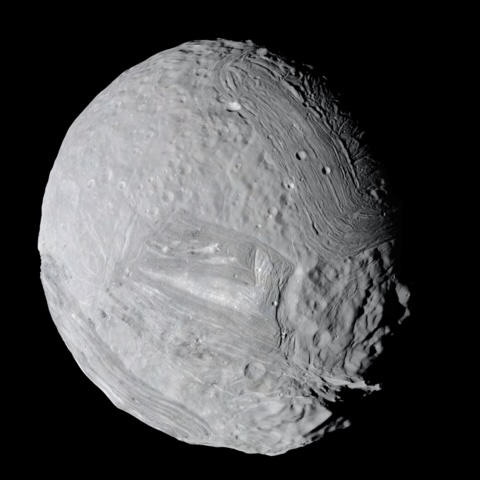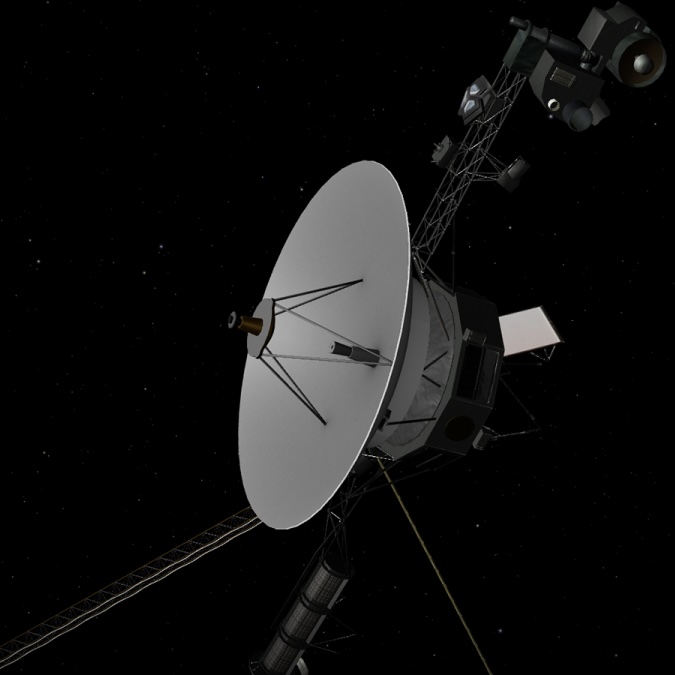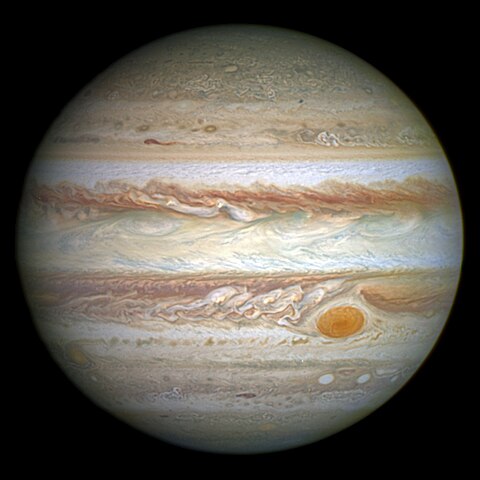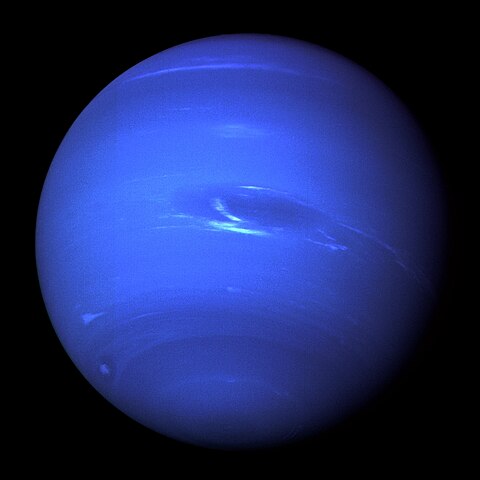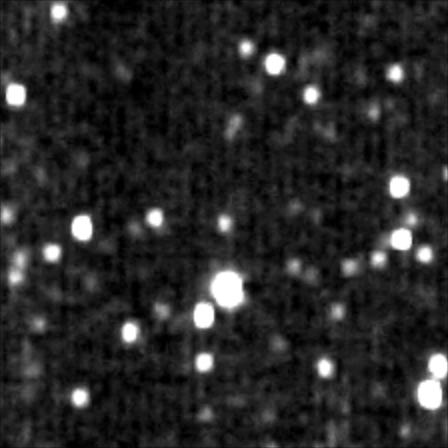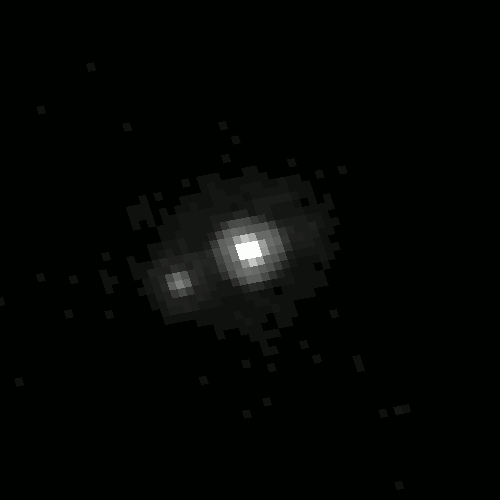1 day / second
0.5 AU
Uranus
Planet
A cold, blue-green ice giant planet tipped nearly sideways on its axis, with a set of narrow rings and a family of at least 27 moons named after literary characters.
Key Facts
orbital regime | Outer System |
learn more | Wikipedia |
mass | 8.6810e+25 kg |
radius | 25,362 km |
hill radius | 0.446 AU |
semi-major axis | 19.191 AU |
eccentricity | 0.047 |
inclination | 0.773º |
longitude of the ascending node | 74.006º |
argument of periapsis | 96.999º |
orbital period | 84.072 years |
sidereal rotation period | 16.76 hours (retrograde) |
axial tilt | 82.23º |
surface gravity | 0.918 g |
discovery date | March 13, 1781 |
discovered by | William Herschel in Bath, England |
name origins | Named after Uranus, the Greek god of the sky |
material composition | Ice giant planet composed primarily of ices (water, ammonia, methane) with rocky core |
albedo | 0.3 |
density | 1.271 g/cm³ |
Major Moons
Puck
A small, roughly spherical moon discovered by Voyager 2 in 1985 that orbits relatively close to Uranus and is heavily cratered with one prominent impact crater named Bogle.
Miranda
A chaotic-looking moon with an extremely varied surface featuring giant fault canyons up to 12 kilometers deep, unique "racetrack" patterns, and jagged terrain suggesting a violent past where it was broken apart and reassembled multiple times.
Ariel
Ariel is Uranus's fourth-largest moon, with a heavily cratered icy surface marked by an extensive network of deep canyons and valleys that suggest past geological activity.
Umbriel
A dark and heavily cratered moon of Uranus marked by its low reflectivity and a prominent bright ring-shaped feature called Wunda crater on its surface.
Titania
The largest of Uranus's moons, Titania is a heavily cratered icy world with a complex system of valleys and fault lines carved into its surface during an ancient period of geological activity.
Oberon
The outermost of Uranus's major moons, Oberon is a heavily cratered, icy body marked by dark patches of material and deep impact basins with mountain peaks that rise up to 6 kilometers above the surface.
Spacecraft Visits
Voyager 2
Flyby
Launched in 1977, visited in 1985
During its January 24, 1986 flyby of Uranus at a distance of 81,500 kilometers, Voyager 2 studied the planet's atmosphere, magnetic field, and ring system while discovering 10 new moons and capturing the first detailed images of its five largest moons.


